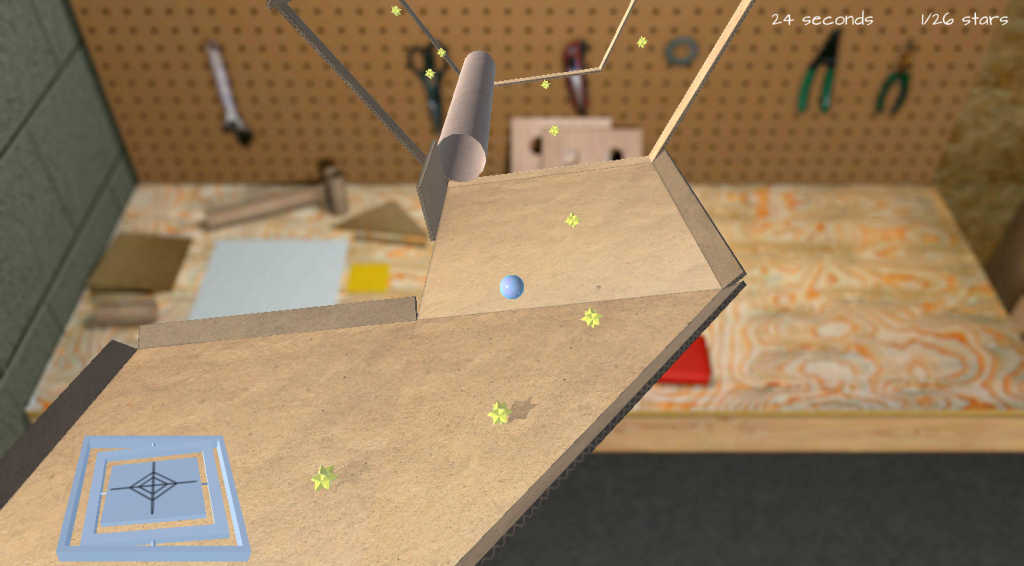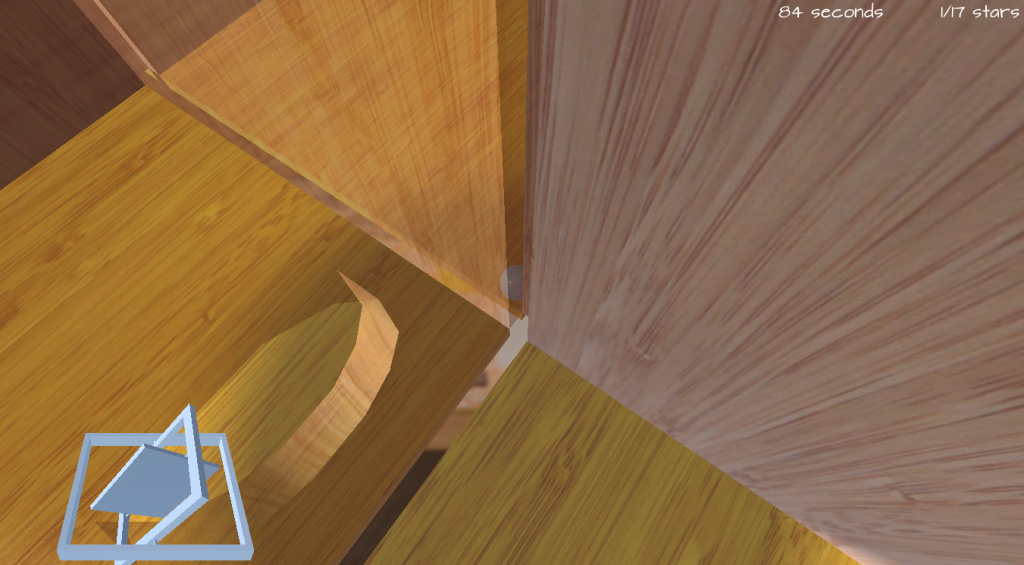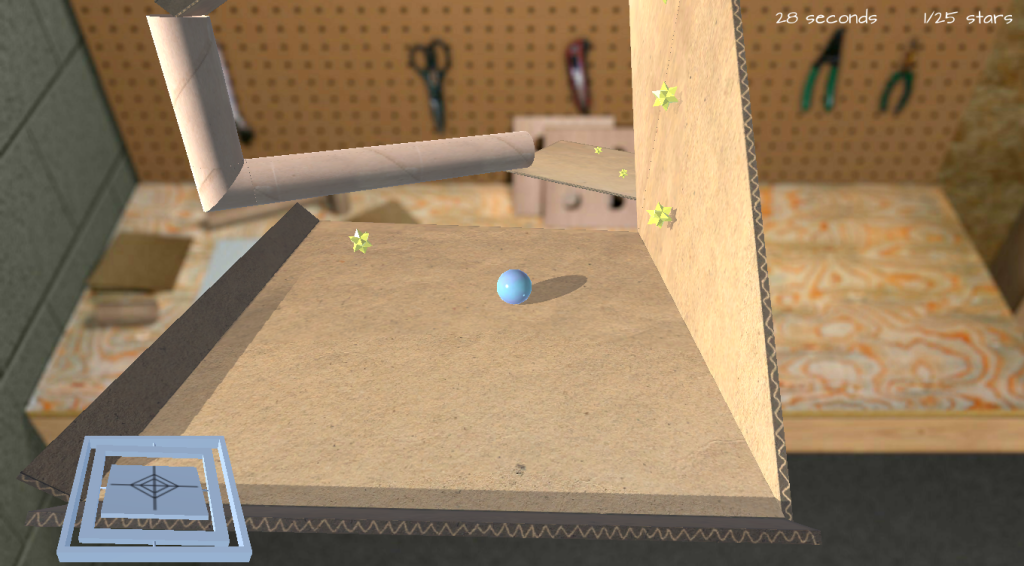
Developer: Ketos Games
Publisher: Ketos Games
Platform: PC, Mac
Tested on: PC
Marble Muse – Review
A marble physics game is often fun to pick up once in a while and play for half an hour due to its pleasing nature and gameplay. Indie games often tackle long established genres and Marble Muse is exactly one of these. Developed by Ketos Games this Unity title sets up to simulate real life marble physics, but does it achieve that goal? Let’s take a look at the game’s positives and negatives.
Story
Marble Muse has very little to no story. The steam page tells us that it takes place in an ‘inventor’s workshop,’ although the game itself never really details this. The menu is set in what we can assume is the aforementioned workshop, but no explanation is ever given.
This isn’t necessarily a bad thing when we take into account what kind of game this actually is. The ‘marble physics’ genre has never perfectly gone hand in hand with storytelling, as it often seemed out of place or cheesy (e.g. Super Monkey Ball 2). Therefore the lack of any kind of story can be excused.
Graphics
Marble Muse features simplistic graphics which get the message across well, but aren’t extraordinary or very noteworthy. The game never really looks astonishingly beautiful on max graphics, which is a shame, although the performance on low-end computers is equal to that on high-end rigs. Textures on objects in the game’s environment may look flat or basic, but they’re recognisable as what it’s meant to represent.
Walls are perfectly distinguishable from floors, and the brightly coloured blue ball is very recognisable amidst the environment. While the game tries to impersonate reality to the best of its capabilities some textures fall flat, while others stand out. The cardboard texture looks very much like cardboard for example, while the wood looks very generic and almost resembles painted plastic.
Sound
Marble Muse’s sound design and graphics are on just about the same level: very basic, but not annoying. The game features very simplistic techno beats that don’t really amount to much. While some may argue the songs, of which I only counted three, are catchy, I did not find myself humming along while concentrating or going out with any tune stuck in my head.
The sound effects on the other hand are horrid. Rolling the ball on any surface sounds like pushing a bowling ball over sand paper, recording 2 seconds of the sound it produces, then badly looping it. When flinging a marble at a wall we’re greeted with a knock very much resembling a foley from an early Looney Toons episode. In general it lacks effort, and sounds horribly cheap.
Gameplay
As Marble Muse is a game surrounding marble physics, gameplay is its main element. The aforementioned bad luggage this game carries around on its back might have been excusable if the gameplay were outstanding. Sadly, it isn’t.
The goal of the game is to collect all of the stars scattered around the level, and once these have been acquired you need to find the often easily located ‘Final Star.’ Every level has a ‘hidden marble’ and some feature ‘red stars.’ Attempts to beat the levels are timed, and medals are rewarded depending on how quickly it was completed.
Starting with its good side, the game has wonderful and creative level design, half of the time. With a reasonably steep learning curve the game throws the player into what we’ll refer to as the cardboard period. The first couple levels exist to acquaint the player with the game’s marble physics (more on that in a minute), and it does this quite well. It effectively gives the player slowly increasingly difficult levels, and when it is assumed the player knows what he’s doing, it throws in some clever elements like swinging toilet paper rolls which react to your mouse’s movements.
 One of the game’s core features is the fact that the level can be spun around entirely. Any side of the level can be facing up at any given moment. This is what distinguishes it from games like Super Monkey Ball where the level can only be manipulated to a certain degree. The use of a mouse plays a large part in this, as the mouse can be moved around to a much higher extent than the analog stick on a controller. This is where the clever level design comes in again, as it sometimes takes advantage of the full 360 degrees quite well. The player is forced to roll up walls, or turn upside down.
One of the game’s core features is the fact that the level can be spun around entirely. Any side of the level can be facing up at any given moment. This is what distinguishes it from games like Super Monkey Ball where the level can only be manipulated to a certain degree. The use of a mouse plays a large part in this, as the mouse can be moved around to a much higher extent than the analog stick on a controller. This is where the clever level design comes in again, as it sometimes takes advantage of the full 360 degrees quite well. The player is forced to roll up walls, or turn upside down.
On the other hand controlling the game with the mouse can be a real headache. When turning the game around a full 180 degrees vertically it can at times decide to flip mouse controls, and the player is forced to use the ‘turn level’ button, which turns the level around 180 degrees horizontally. Some levels are entirely boxed in, and luckily the game turns down the opacity of a wall covering up the ball, but when every wall does this the lack of vision gets on your nerves. At a certain point the game introduces bounce pads, and very quickly you come across a room where the floor and roof is filled with them. At this point the ball becomes entirely uncontrolable, simply because it is almost impossible to figure out what mouse movement must be made to fly the ball to a certain area. All of these examples are from the second world, which features bad level design, even though its based mostly on the ages old children’s toy where you’re guiding a marble through a hole-filled maze.
 The level design forms only half of Marble Muse’s gameplay, the other half relies entirely on how the marble responds to inputs. Sadly, the physics are horrendous. Throughout the entire game it feels like the friction has been turned up way too high, and the gravity way too low. The marble moves sluggishly forward when tipping the level, and holds almost no momentum. Moving the marble around feels not at all pleasing, and the process spawns boredom. Many a time have I quit playing Marble Muse purely out of boredom. This seems entirely out of place as the marble physics genre has been an established and polished one since 1984, making it one of the oldest video game genres to date.
The level design forms only half of Marble Muse’s gameplay, the other half relies entirely on how the marble responds to inputs. Sadly, the physics are horrendous. Throughout the entire game it feels like the friction has been turned up way too high, and the gravity way too low. The marble moves sluggishly forward when tipping the level, and holds almost no momentum. Moving the marble around feels not at all pleasing, and the process spawns boredom. Many a time have I quit playing Marble Muse purely out of boredom. This seems entirely out of place as the marble physics genre has been an established and polished one since 1984, making it one of the oldest video game genres to date.
One of the game’s funnier sides is how it handles gravity. As the level can be flipped around in all directions, once the player accidentally flings themselves off they can easily spin the level to be positioned underneath the marble again, leading it to drop right back on. This mechanic can also be used to the players advantage. It is, for example, possible to float through an entire level. Another quirky detail is that when spinning the level around a full 360 degrees vertically the ball hops up a little bit, and depending on how fast you do it the marble goes up higher or lower. We’re not entirely sure if these features were added on purpose, or if this is simply an exploit of the game’s programming.
Conclusion
All in all the game lacks effort, and seems like wasted potential. The fact that the level can be spun around along any axis is interesting, and has been used smartly in some levels. Sadly, the rest of the game, as mentioned before, lacks effort and feels rushed. The steep pricetag is not justifiable, especially for a game in a well established genre with a distinct lack of replayability.





No Comments